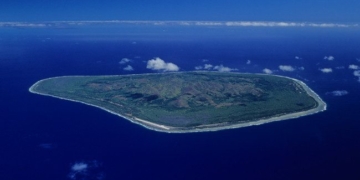The City of Baiae Beneath the Ocean was once a playground for the wealthy elite of Ancient Rome, filled with opulent structures.
Located about 240 kilometers south of Rome, the luxurious resort of Ancient Rome was nestled between Mount Vesuvius and the vast Mediterranean Sea. This extravagant land was known as Baiae.
Centuries ago, it was akin to modern-day Las Vegas, a place shrouded in secrets, conspiracies, and scandals.
Today, much of Baiae lies underwater, with a vast collection of mosaics, columns, statues, and other remnants of Ancient Rome submerged in the deep sea.
The exact time of Baiae’s construction remains a mystery. However, by the 1st century BC, this city had become a favored destination for the wealthy elite of Ancient Rome. Notable figures like Julius Caesar, Augustus, and Nero owned vacation homes there.
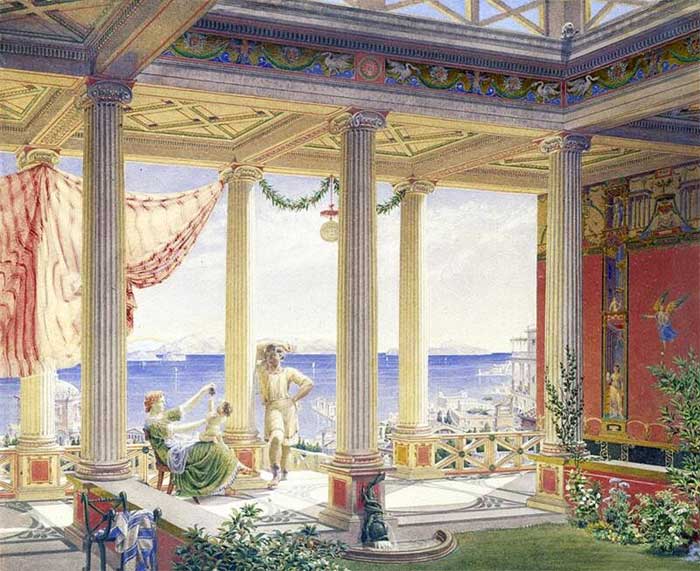
An illustration of the golden age Baiae resort city. (Photo: ATI).
While many were drawn to Baiae for its natural hot springs and mild weather, it quickly gained notoriety as a land of “sinful” behaviors. In 56 BC, a prominent figure in society named Clodia was convicted in a trial for living like a “prostitute,” a “seductress” of the elite in town.
Other ancient sources describe this resort as a “final harbor,” where visitors could truly immerse themselves in a “wild” lifestyle. It was infamous for festivals where people engaged in rampant sexual activities, drunkenness, grand feasts, and various forms of debauchery.
Although Baiae was primarily for entertainment, politics occasionally intruded. There is a story that Roman Emperor Caligula visited Baiae merely to prove a point to a political critic.
According to Ancient Origins, the astrologer Thrasyllus told Emperor Caligula that he “had a greater chance of becoming emperor than riding a horse across Baiae Bay.” Angered by this, Caligula allegedly ordered the construction of a three-mile floating bridge and rode his horse across it.
For many years, only the wealthiest could access Baiae, but everything changed when the “city of sin” began to sink into the sea.

By the 4th century AD, a significant portion of Baiae had begun to sink into the Mediterranean Sea
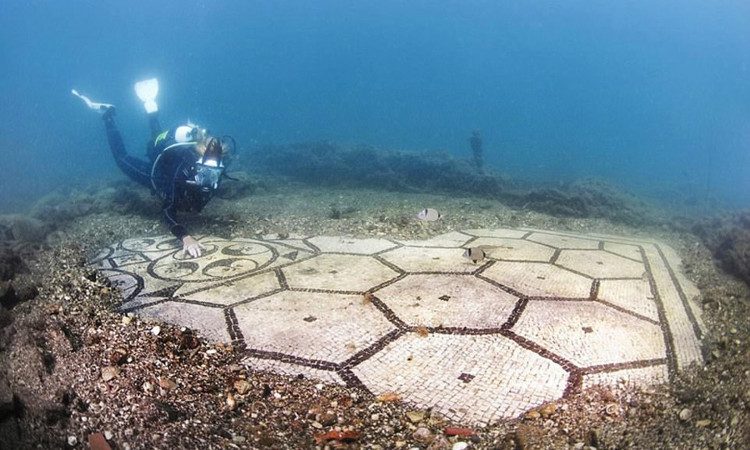
Some architecture remains relatively intact despite being submerged for nearly 2,000 years. Divers today can explore the ruins of the underwater city. In the photo, a diver meticulously observes the mosaic flooring with clear patterns.

Divers explore an architecture that may have once been castle walls or a square inside the city.
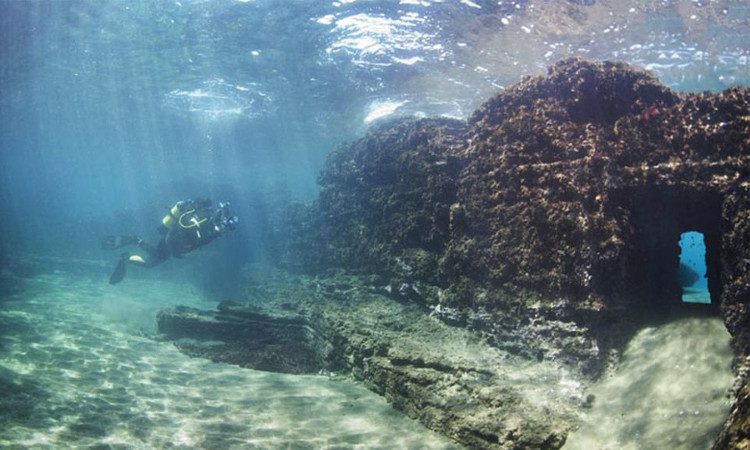
Many walkways, walls, mosaics, and statues have survived through time. “This place is considered one of the most important Roman cities for centuries,” says photographer Antonio Busiello, who lives in Naples.
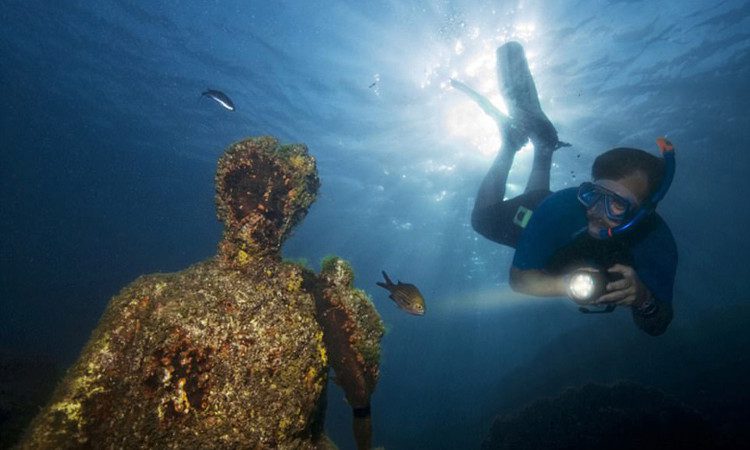
A diver uses a flashlight to closely examine an ancient statue that has now become home to many marine creatures.
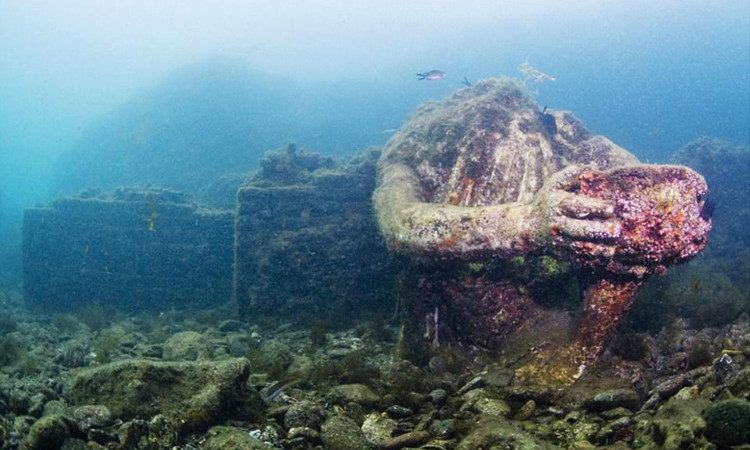
The ruins of a luxurious Roman city.
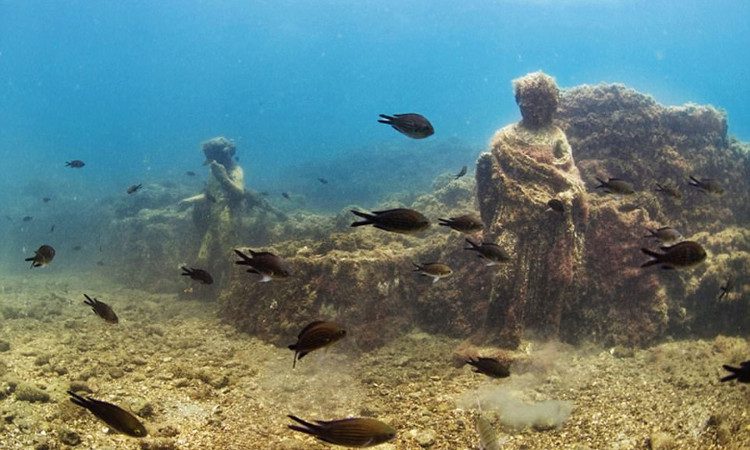
Two large statues placed close together remain relatively intact, including the head and limbs. Despite being eroded by sand over the years, the statue on the right still maintains clear details of the folds in its layered garments.
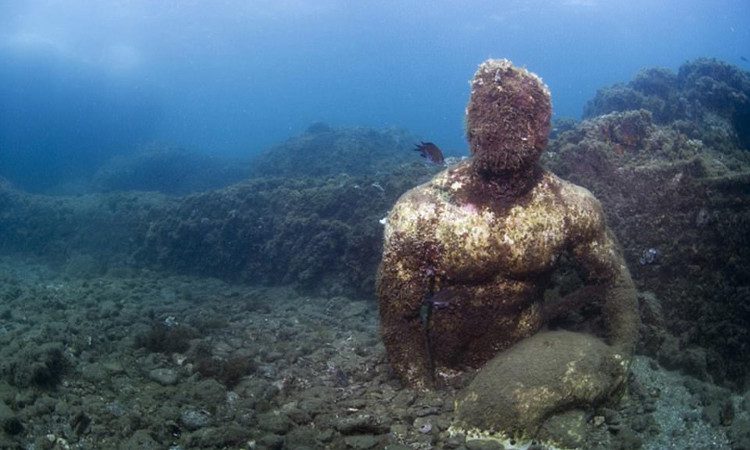
The statue of a strong man shows only the upper body. It appears that this figure is lifting a large and heavy object.
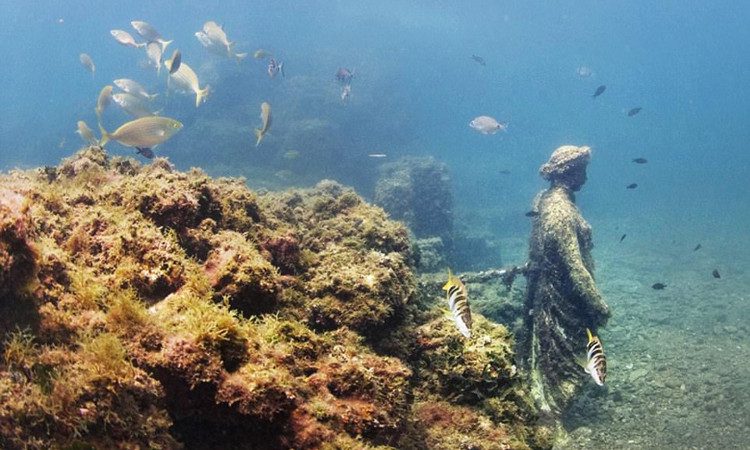
The city has now become a habitat for many marine species.
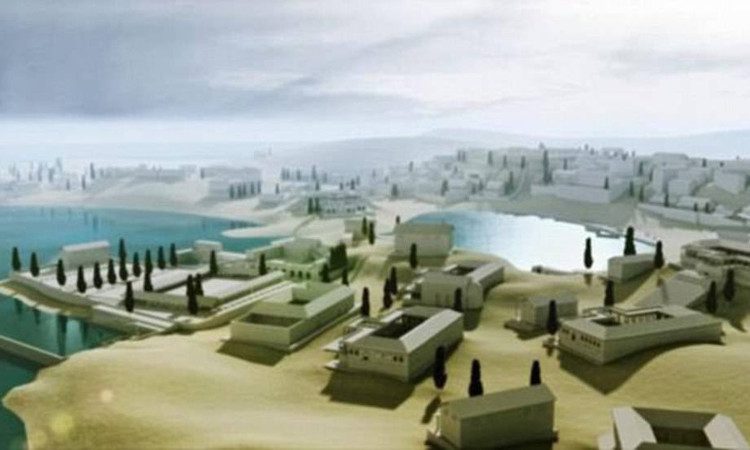
An artist’s rendition of the city of Baiae before it sank to the ocean floor, with palaces and squares right next to the water’s surface. In its heyday, Baiae was home to many famous figures of Roman times, including the general Julius Caesar, Emperor Nero, military leaders Pompey, Marius, and Emperor Hadrian.

















































